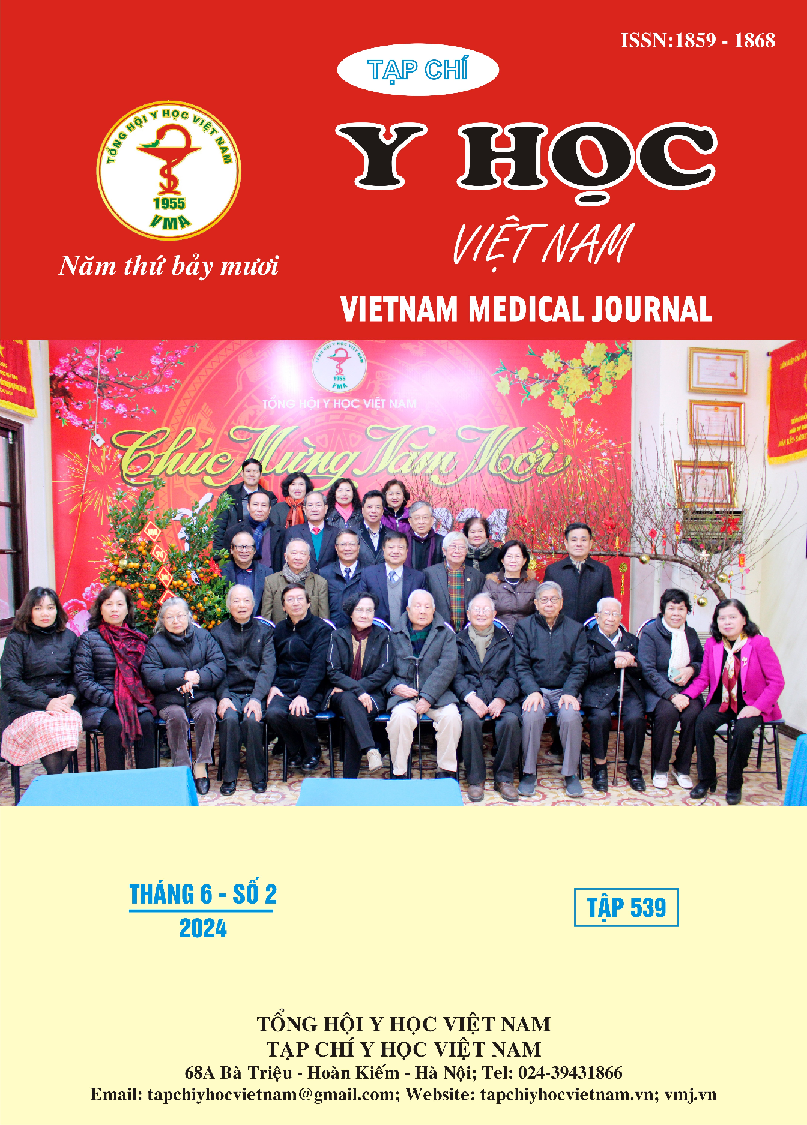ASSESS EFFECT OF TREATING NUTRITION PERIOPERATION IN LARYNGEAL AND HYPOPHARYNGEAL CANCER PATIENTS WHO INTEND TO UNDERGO SURGERY AT DEPARTMENT OF OTORHINOLARYNGOLOGY IN CHO RAY HOSPITAL
Main Article Content
Abstract
undermining people’s health, especially laryngeal and hypopharyngeal cancer because the ability of eating will be greatly affected. Therefore, most patients are malnourished when they admit to the hospital. In addition, preoperative malnutrition can be seen as a postoperative prognostic predictor as it increases the rate of postoperative complications. Unfortunately, this problem has been attended insufficiently. Objectives: Identifying preoperative nutritional status by Subjective Global Assessment (SGA), Body Mass Index (BMI), serum albumin and serum prealbumin and total of lymphocyte. Evaluating the effectiveness of nutritional treatment perioperation. Observing the correlation between SGA and postoperative complications as well as length of hospital stay. Materials and method: Prospective studies, intervention uncontrolled case series. Results: 41 patients were separated into two groups. The first group was comprised of 20 patients treated by total laryngectomy technique. The other one consisted of 21 patients operated by gastric pull up technique. The rate of preoperative malnutrition was 31,7 % by BMI; 80,5% by SGA-B & C; 14,6% with serum albumin < 3.5g/dl; 29,3% with serum prealbumin <20 mg/dl and was 29,3% with total lymphocyte < 1500 mm3. Nine patients treated with the preoperative nutrition obtained better results. All of patients were treated postoperative nutrition. As a result, patients’ mean weight was higher than the day they were admitted. Conclusion: Most of patients were malnourished, approximately 80 per cent according to SGA. This is why we discover these cases earlier will be essential for us to provide proper nutrition in time to get the best postoperative outcomes and reduce the length of hospital stay.
Article Details
Keywords
Laryngeal and hypopharyngeal cancer, malnutrition, Subjective Global Assessment (SGA)
References
2. J. Bauer. Use of the scored Patient- Generated Subjective Global Assessment (PGSGA) as a nutrition assessment tool in patients with cancer. Eur J Clin Nutr. 2002. 56, pp.779-785.
3. G. Devoto, Gallo F., Marchello C. Prealbumin serum concentrations as a useful tool in the assessment of malnutrition in hospitalized patients. Clin Chem. 2006. 52 (12), 2281-2285.
4. Lưu Ngân Tâm. Những vấn đề cơ bản trong dinh dưỡng lâm sàng. Nhà xuất bản y học. 2014. trang 4.
5. C. Braunschweig, Gomez S., Sheean P. M. Impact of declines in nutritional status on outcomes in adult patients hospitalized for more than 7 days. J Am Diet Assoc. 2000. 100(11), 1316-1322; quiz 1323-1314.
6. Nguyễn Thùy An, Lưu Ngân Tâm, Tình trạng dinh dưỡng trước mổ và biến chứng nhiễm trùng sau phẫu thuật gan mật tụy tại Bệnh viện Chợ Rẫy. Tạp chí Y học Thành phố Hồ Chí Minh. 2011. 15(4), 387.
7. M. Pirlich, T. Schutz, K. Norman. The German hospital malnutrition study. Clin Nutr. 2006. 25(4), pp.563-572.


